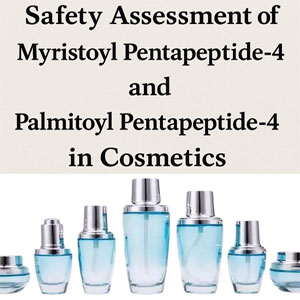Safety Assessment of Myristoyl Pentapeptide-4 and Palmitoyl Pentapeptide-4 in Cosmetics

The safety assessment of Myristoyl Pentapeptide-4 and Palmitoyl Pentapeptide-4 has become a growing concern as these peptides are increasingly used in anti-aging and skin-rejuvenating cosmetic products. Both are synthetic peptides that mimic natural protein fragments to promote collagen synthesis, smooth wrinkles, and improve skin texture. However, with the rise of peptide-based cosmetics, thorough safety evaluations are essential.
Myristoyl Pentapeptide-4 and Palmitoyl Pentapeptide-4 are structurally similar, differing mainly by the fatty acid chain attached to the peptide. This lipid modification enhances skin penetration and stability in formulations. Both peptides are classified as signal peptides, designed to communicate with skin cells and stimulate repair processes. They are often found in serums, creams, and under-eye treatments.
Regulatory agencies and industry panels, such as the Cosmetic Ingredient Review (CIR) Expert Panel, have reviewed these peptides and generally consider them safe for topical use at typical concentrations. Available toxicology data indicates low irritation potential, and they are not associated with sensitization or systemic toxicity under normal use conditions.
Despite their favorable safety profiles, the effectiveness of Myristoyl Pentapeptide-4 and Palmitoyl Pentapeptide-4 depends on formulation and delivery system. Products using these ingredients should follow Good Manufacturing Practices (GMP) and ensure concentrations remain within safe limits. Manufacturers are advised to conduct stability testing and patch testing to further ensure product safety.
In conclusion, current evidence supports the safe use of Myristoyl Pentapeptide-4 and Palmitoyl Pentapeptide-4 in cosmetics. Their anti-aging benefits, combined with a low risk of adverse effects, make them attractive choices for skin care formulations. Ongoing research and regulatory oversight remain important to guarantee continued consumer safety and product efficacy.


